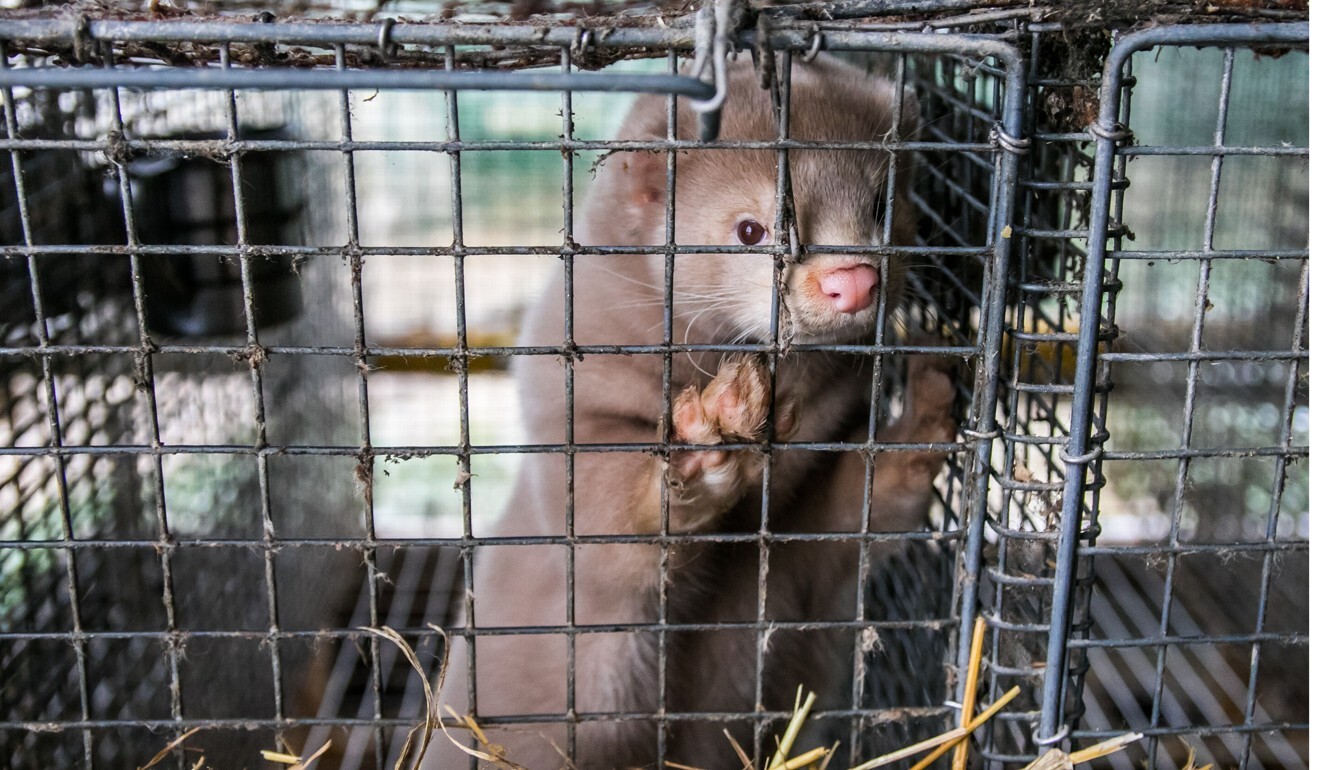
Coronavirus cases at Dutch mink farms highlight need to monitor animal spread
- Mink are thought to have contracted the illness from employees at the farms, which have been quarantined
- As more species become infected and the situation evolves, expert says ‘it’s pertinent that we keep an eye on this’
Two mink breeding farms in the country have been placed under quarantine after animals were found to have been infected by the virus that causes Covid-19, likely from farm staff, according to reports of a government announcement on Sunday.
The Dutch agriculture ministry said there was “minimal” possibility that the infected minks could spread the virus to humans or other animals on the farms.
But the outbreak on the farms, which produce fur, underlines the critical need for careful monitoring of animals during the pandemic, both for human and animal health, according to experts.
“We are finding more and more species are becoming infected, including tigers and domestic cats and now mink. Because [the situation of] Sars-CoV-2 is evolving fairly quickly, it’s pertinent that we keep an eye on this,” said Peta Hitchens, a veterinary epidemiologist and senior research fellow at the University of Melbourne in Australia, referring to the virus that causes Covid-19.
Hitchens said there was a potential risk for the virus to further mutate and spread among animals living in close proximity to each other, which would be particularly detrimental if threatened or endangered animal populations were affected.

It is not yet known how the novel coronavirus emerged in humans, but experts believe a likely route is that a virus-carrying bat passed it to humans through an intermediary animal they had close contact with, possibly via the wildlife trade. A number of early cases in the initial outbreak in central China late last year were linked to a wet market known to sell wildlife.
But evidence has shown that the virus can also go the other way, moving from infected humans to animals they are in close contact with.
There is no evidence that the animals are able to spread the virus back to humans. In Hong Kong, government veterinarians monitoring quarantined pets, mainly cats and dogs, concluded that pets do not get infected easily, and do not transmit the virus to other pets or humans.
But the situation should continue to be monitored to understand those risks, according to veterinary epidemiologist Dirk Pfeiffer, a professor at City University in Hong Kong.
“We definitely need to monitor spillovers between humans and animals, but experimental transmission studies are most important,” he said, pointing to a report in Science magazine earlier this month.
The study found the coronavirus replicated poorly in dogs, pigs, chickens and ducks, but ferrets and cats were susceptible to infection. Researchers, including from the Harbin Veterinary Research Institute in China, collected data on a small number of animals in laboratory experiments.
“That kind of work should inform the intensity of animal surveillance for Covid-19,” Pfeiffer said. “In terms of basic principles, it is actually very much about how the virus interacts with different host species, and so far there is no species that comes even close to the effectiveness of spread amongst humans.”
Hitchens said it could be important to limit certain interactions between humans and animals at this time to reduce the risk to animals.
“It’s important globally that we increase biosecurity, for example by ensuring the public is restricted from going to farms, sanctuaries or zoos that house wildlife,” she said, noting that the pandemic could provide an opportunity for closer evaluation of biosecurity measures in such places.
“We shouldn’t assume that what we have in place is sufficient,” she said.
Additional reporting by Reuters

